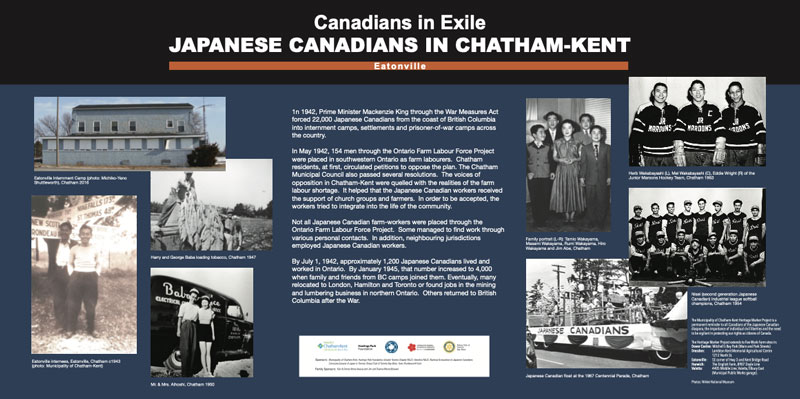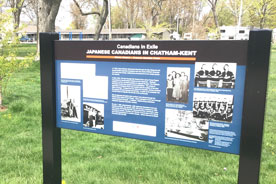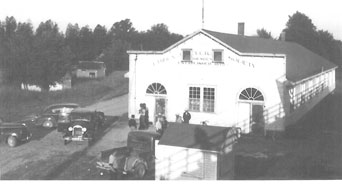

The Hastings Park Foundation was formed in 1987 before but inspired by the Settlement for Japanese Canadian Redress announced in September 1988. Since then the charitable foundation has been instrumental in bringing to fruition several book, theatre and educational conference projects. The foundation has also funded the Beach School and its successor Reach Sudbury School, two independent schools for students who want an alternative to the traditional school system. Throughout it all, HPF has concerned itself with human rights issues inherent in all of these projects.
The board of directors consists of four Japanese Canadians with extensive experience in education and human rights issues.
The sub-committee known as HpF Press is primarily concerned with publishing books that would not be considered by the mainstream publishing industry, but have important contributions to make to Canadian identity.
Contact us:
Hastings Park Foundation
6 Wildwood Crescent
Toronto Ontario M4L 2K7
Email
The Hastings Park Foundation for Rights and Freedoms was incorporated as a charitable organization in 1987. Its mandate grew out of the struggle for and the winning of redress for Japanese Canadians.
Specifically, the goals of the foundation are as follows:
Principal Officers:


On September 7, 2018, a ceremony was held at Mitchell’s Bay to celebrate the installation of historic signs and Yoshino cherry trees at five residential sites where Japanese Canadians were interned during World War II. The National Association of Japanese Canadians, Hastings Park Foundation and other institutions, began this project with the Chatham-Kent Parks and Open Space staff on December 14, 2016. The design, fabrication and installation of the interpretive panels were funded by the National Association of Japanese Canadians (NAJC) Community Renewal Fund, the Hastings Park Foundation, Rotary Club of Bay Bloor, the Consulate General of Japan, Hamilton Chapter NAJC, Toronto Chapter NAJC and individual donors.
In 1942, the Government of Mackenzie-King, against the advice of the RCMP and the Canadian military, bowed to the racist voices of federal politicians from British Columbia and imposed the War Measures Act and incarcerated 22,000 Japanese Canadians into camps in the interior of British Columbia and to work farms in Alberta and Manitoba. Others were sent to road camps or prisoner of war facilities in Petawawa or Angler in Ontario. Four thousand Japanese Canadians, a majority born in Canada, were deported to Japan after the war. All properties were seized and sold without permission by the Government. The War Measures Act was allowed to lapse in 1949 – four years after World War II. In that year, Japanese Canadians were given the right to vote.

In the spring of 1942, several hundred Japanese Canadian men, were sent to four Northern Ontario road camps to build the Trans Canada Highway between Schreiber and Jackfish. In an agreement with the Federal Government in May 1942, the Ontario Department of Agriculture agreed to bring 500 Japanese Canadian men from the Schreiber camp to work on sugar beet farms in southwestern Ontario as part of the Ontario Farm Labour Forces Project. By June of 1942 there were 320 Japanese Canadian men working in Chatham-Kent and surrounding areas.

At first, Japanese Canadians working in Chatham-Kent and surrounding areas were met with suspicion and hostility from the community and civic leaders. Japanese Canadians will forever be grateful to the farmers and the religious organizations who were the first to welcome them to Chatham. Once settled in Chatham and other parts of Ontario, the men called for their families to join them. By 1944, about 2,000 Japanese Canadians had settled to other parts of the province and by 1945, this number reached 4,000. Northern Ontario was the gateway of the Japanese Canadian community in Chatham-Kent, London, Toronto, Hamilton and further east.

The five internment sites in the City are: Harold English Farm, Dover Site (Mitchell’s Bay Park), Dresden Site (Lambton-Kent Memorial Agricultural Centre) , Eatonville Site (Highway 3 and Kent Bridge Road) and Valetta Site (4405 Middle Line).
Along with the historic marker that stands at Schreiber, the five heritage markers in Chatham-Kent are the only reminders of the presence of Japanese Canadian exiles in Ontario. There are many more sites of historical importance to the history of Japanese Canadians in the province that must be acknowledged through a permanent memorial.
For more information, please contact: the City of Chatham-Kent.